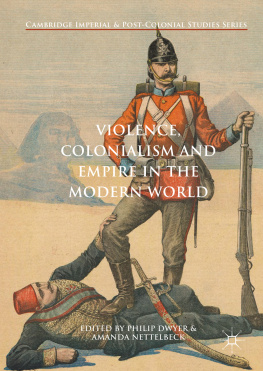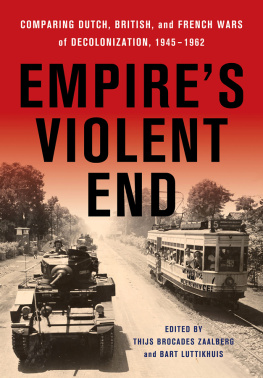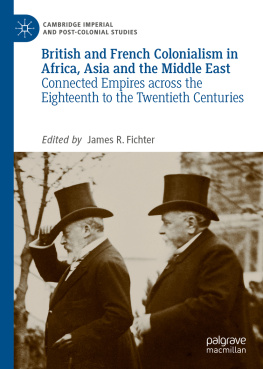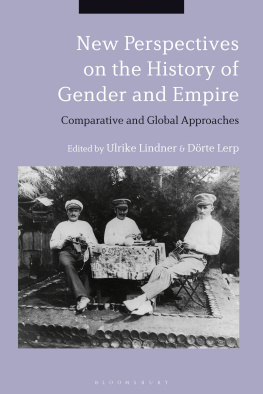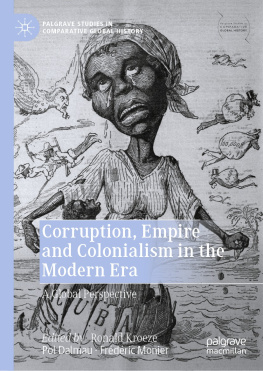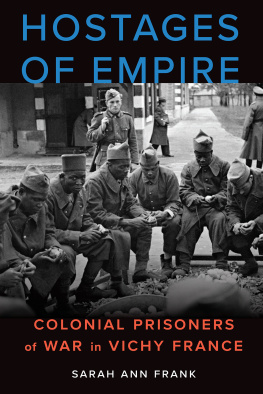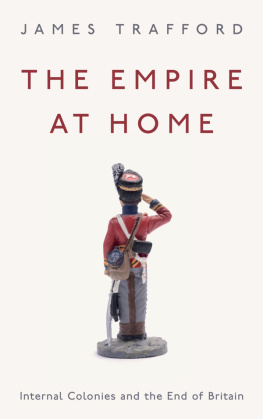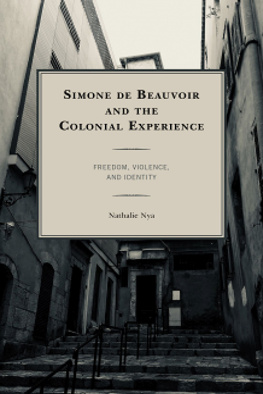Violence has always been central to the long, complex history of empire and colonialism that stretches back over four centuries of the modern era. While the concept of empire has varied in its definitions, all empires shared a number of common features: they were multi-ethnic, asymmetrical and repressive power structures, governed by authoritarian powers that could be linked together by common (racial) ideologies. Colonial violence was diffuse, multi-layered and enormously variable. And while violence is far from unique to colonial practices, it was always embedded in the social, legal, economic and gendered foundations on which colonial relations were built.
Exploring the shared and varied expressions of imperial and colonial violence is the object of this collection. Such a project carries with it the reminder that violence is a fundamentally ambiguous concept, whose meanings had a different cast across different practices and settings of colonialism . In this respect, violence can only be viewed as a process that is always historically contingent, not as a singular outcome or event. In the colonial context, the symbolic dimensions of violence encompass a range of strategies that legitimated the political marginalisation and social disempowerment of colonised peoples. These were perpetuated through imposed legal norms, religious institutions, education, surveillance and policing systems, as well as through sheer brute force.
Although the foundational role of violence in the process of empire -building is now widely accepted, we still need closer attention to the structural relationship between colonialism , empire and violence beyond spectacular moments in imperial history. The law appears to have remained largely ignored by French high school teachers, but the emergence of modern-day proponents of empire underlines the difficulties historians face in conceptualising the violence at the heart of the colonial project.
The best-known theorists of the structural relationship between colonisation and violence in the post-Second World War era, both of them from the island of Martinique, are Frantz Fanon and Aim Cesaire.
Recent analyses of the relationship between violence , colonialism and empire have not been without controversy, attracting some suggestions that the historical pendulum has swung the other way. Just as there is a desire in some quarters to whitewash or to gloss over the violence of the colonial project, some scholars have been accused of skewing the debates by focusing on the most spectacular aspects of colonial violence , or of oversimplifying the racism or the civilising mission that underpinned it. A good part of this scholarship analyses particular practices of violence as a tool of empire within clearly define geo-political spaces, as do a number of the chapters in this collection. With a somewhat different aim, this chapter identifies some of the shared expressions of violence within a comparative framework in assessing its place as an ever-present feature of modern colonial history. From the late eighteenth to the mid-twentieth centuries, technologies , ideologies and conditions have radically changed, but the deployment or the threat of violence still remained at the core of colonial relations. Indeed, from the first encounters between Europeans and Indigenous peoples through to decolonisation processes in the twentieth century, violence was so prevalent that its legacies continue to structure cross-cultural relationships in post-colonial societies of the twenty-first century.
Colonial Conquest and (Cultural) Elimination
Both physical and symbolic forms of violence were common features of colonial societies across time and across empires, but the purposes and outcomes of that violence varied across different kinds of colonial setting. Scholars of colonisation and empire have sought to better understand those variations and their aftermaths by drawing a broad distinction between exploitative colonialism and settler colonialism . ), for example, we see how environment and landscape were appropriated by empire in more than a literal sense; at a deeper level, the traces of violence that scarred colonial landscapes could be obscured and smoothed away by the perspective of an imperial worldview. In this sense, supposedly new worlds were rendered civilised by a range of violent strategies that could be as much symbolic as they were material.
At the same time, the role of material violence cannot be underestimated: it buttressed the imperial enterprise wherever it went and was often used with astonishing brutality. By its very nature, colonisation involved the subjection of peoples and their lands, cultures and laws. To the degree that this process of subjugation required physical force, violence was enlisted in the cause of what Rudyard Kipling famously referred to as savage wars of peace.
While Hensleys count of armed conflicts during the Victorian era is used to illustrate the extensive deployment of violence , it still vastly underestimates the number of private battles and forms of guerrilla warfare that were fought on colonial frontiers. Over the same era, for example, potentially hundreds of skirmishes were fought on the Australian and South African frontiers alone, some of them recorded only obliquely and many of them unrecorded. No one to date has attempted to count the number of clashes that took place across the British, let alone the French, Belgian, Italian or German colonial possessions. What is evident, however, is a disconnect between the rhetoric of a liberal empire , which included wide-spread expressions of humanitarian concern for Indigenous peoples, and the colonial violence that took place on the ground. Colonial wars were necessarily bloody, but as James Lehning argues in this collection (Chap.
Invariably, Indigenous populations responded to the processes of colonisation with attempts to defend their lands, cultures and communities. Political or armed resistance was met in turn with state-sanctioned violence . Nonetheless, in cases where Indigenous forces were organised, armed resistance was often highly effective and it absorbed vast imperial resources to suppress. In assessing the effectiveness of the Xhosa guerrilla fighters who fought serial wars on the eastern Cape frontier, for instance, Richard Price shows that their resistance to colonial intrusion stretched the local capacity of the British army almost to breaking point.
A tipping point in the capacity of Indigenous peoples to resist colonisation came with technological advances in modern warfare, which gave European colonisers the upper hand.
There were some occasions on which European troops were bestedthe Battle of Isandlwana in 1879 during the Anglo-Zulu Wars or the Fall of Khartoum in January 1885 are examplesbut typically, resistance invited excessive retaliation. The Battle of Rorkes Drift, lionised by Victorians and made famous by the 1964 film Zulu , is a case in point. An archaeological dig has only recently uncovered that Rorkes Drift was also the scene of an atrocity. In the hours after the battle, hundreds of wounded Zulu left on the field of battle were bayoneted, hanged and buried alive in mass graves. More Zulus are estimated to have died in this way than in the battle, but the executions were covered up to preserve the image of Rorkes Drift as a bloody but honourable fight between two forces that respected each others courage. The same attitude was reflected in other modern empires in the process of suppressing resistance to colonial rule.

